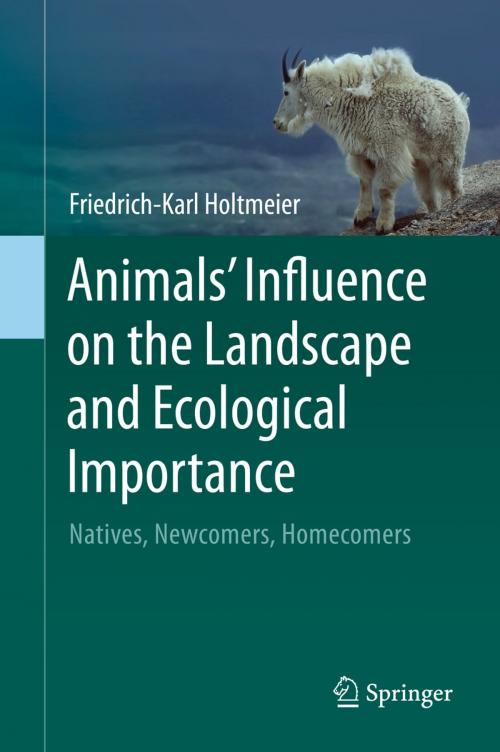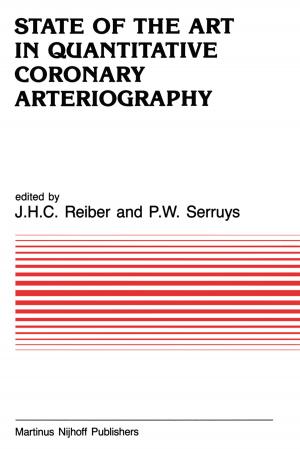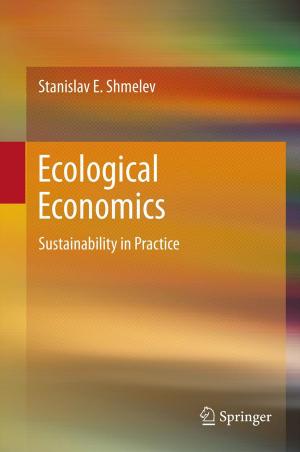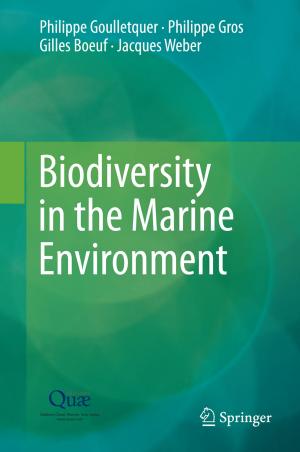Animals' Influence on the Landscape and Ecological Importance
Natives, Newcomers, Homecomers
Nonfiction, Science & Nature, Science, Earth Sciences, Geography, Biological Sciences, Environmental Science, Nature| Author: | Friedrich-Karl Holtmeier | ISBN: | 9789401792943 |
| Publisher: | Springer Netherlands | Publication: | October 22, 2014 |
| Imprint: | Springer | Language: | English |
| Author: | Friedrich-Karl Holtmeier |
| ISBN: | 9789401792943 |
| Publisher: | Springer Netherlands |
| Publication: | October 22, 2014 |
| Imprint: | Springer |
| Language: | English |
In its first English-language edition, this book introduces the many-faceted interactions of animal populations with their habitats. From soil fauna, ants and termites to small and large herbivores, burrowing mammals and birds, the author presents a comprehensive analysis of animals and ecosystems that is as broad and varied as all nature. Chapter 2 addresses the functional role of animals in landscape ecosystems, emphasizing fluxes of energy and matter within and between ecosystems, and the effects of animals on qualitative and structural habitat change. Discussion includes chapters on the role of animal population density and the impacts of native herbivores on vegetation and habitats from the tropics to the polar regions. Cyclic mass outbreaks of species such as the larch bud moth in Switzerland, the mountain pine beetle and the African red-billed weaver bird are described and analyzed. Other chapters discuss Zoochory – the dispersal of seeds by ants, mammals and birds – and the influence of burrowing animals on soil development and geomorphology. Consideration extends to the impact of feral domestic animals. Chapter 5 focuses on problems resulting from introduction of alien animals and from re-introduction of animal species to their original habitats, discusses the effects on ecosystems of burrowing, digging and trampling by animals. The author also addresses keystone species such as kangaroo rats, termites and beavers. Chapter 6 addresses the role of animals in landscape management and nature conservation, with chapters on the impact of newcomer species such as animals introduced into Australia, New Zealand and Europe, and the consequences of reintroduction of species to original habitat. It also discusses the carrying capacity of natural habit, public attitudes toward conversation and more. The final section ponders the effects of climate on interactions between animals and their habitats.
In its first English-language edition, this book introduces the many-faceted interactions of animal populations with their habitats. From soil fauna, ants and termites to small and large herbivores, burrowing mammals and birds, the author presents a comprehensive analysis of animals and ecosystems that is as broad and varied as all nature. Chapter 2 addresses the functional role of animals in landscape ecosystems, emphasizing fluxes of energy and matter within and between ecosystems, and the effects of animals on qualitative and structural habitat change. Discussion includes chapters on the role of animal population density and the impacts of native herbivores on vegetation and habitats from the tropics to the polar regions. Cyclic mass outbreaks of species such as the larch bud moth in Switzerland, the mountain pine beetle and the African red-billed weaver bird are described and analyzed. Other chapters discuss Zoochory – the dispersal of seeds by ants, mammals and birds – and the influence of burrowing animals on soil development and geomorphology. Consideration extends to the impact of feral domestic animals. Chapter 5 focuses on problems resulting from introduction of alien animals and from re-introduction of animal species to their original habitats, discusses the effects on ecosystems of burrowing, digging and trampling by animals. The author also addresses keystone species such as kangaroo rats, termites and beavers. Chapter 6 addresses the role of animals in landscape management and nature conservation, with chapters on the impact of newcomer species such as animals introduced into Australia, New Zealand and Europe, and the consequences of reintroduction of species to original habitat. It also discusses the carrying capacity of natural habit, public attitudes toward conversation and more. The final section ponders the effects of climate on interactions between animals and their habitats.















